BY DEFENCE JOURNALIST SAHIL | T.I.N. NETWORK
IIM Jammu Hosts Transformative Session on Military-Civil Fusion — Strengthening India’s Defence Capabilities through Academia-Industry Collaboration
Jammu | October 19, 2025 —
The Indian Institute of Management (IIM) Jammu, in collaboration with the Indian Army’s Tiger Division, continues to make significant strides in advancing India’s vision of a self-reliant and technologically empowered defence ecosystem. On the third day of the Military Civil Fusion Capsule (MCFC) — an intensive programme designed to promote synergy between the armed forces, academia, civil administration, and industry — a thought-provoking session was held on October 17, 2025, under the overarching theme “Enhancing Defence Capability through Integration with Academia and the Private Sector.”
The event, hosted under the dynamic leadership of Prof. B. S. Sahay, Director of IIM Jammu, brought together some of the finest military minds, academic experts, and policymakers from across institutions like IIM Jammu and IIT Jammu. Together, they explored the transformative potential of collaboration in strengthening India’s defence preparedness and operational efficiency in an era of emerging hybrid warfare and technological disruption.
A Vision Rooted in National Synergy
The Military Civil Fusion Capsule (MCFC), which commenced on October 15, 2025, at the headquarters of the Tiger Division, Jammu, is scheduled to run till October 29, 2025. The capsule embodies the spirit of India’s Whole-of-Nation Approach to national security — an evolving model that integrates civilian, military, and academic resources for a stronger, more adaptive national defence posture.
The overarching aim of the MCFC is to build synergy between the Armed Forces, Civil Administration, Academia, and Security Agencies — not only at the strategic and policy levels but also at the grassroots of governance. Such collaboration, organisers noted, is vital for addressing both traditional security threats and emerging challenges such as cyber warfare, artificial intelligence-driven conflicts, information operations, and socio-economic disruptions that can impact regional stability.
Bridging the Knowledge Gap: The Army Meets Academia
The third-day session began with introductory remarks by senior officers of the Tiger Division, who set the tone for a day dedicated to bridging the gap between field operations and academic innovation. They highlighted how structured partnerships between military establishments and academic institutions like IIMs and IITs can lead to strategic thinking, agile leadership development, and indigenous technological advancement.
Drawing from operational experiences, the officers cited examples such as Operation Sindoor and Operation Rahat (Flood Relief) as living proof of India’s successful civil-military cooperation model. These operations, they said, had not only saved lives but also demonstrated the power of coordination between the defence apparatus, local administration, and citizens.
Discussions delved into the concept of institutional fusion — a system where academia contributes through research, innovation, and policy inputs while the Armed Forces provide the experiential and operational understanding necessary to test and refine those ideas in real-world contexts.
Academic Leaders Redefine National Capability
The session featured several eminent speakers from IIM Jammu and IIT Jammu, who shared insightful perspectives on the future of India’s defence readiness and innovation ecosystem.
Prof. Nitin Upadhyay, Dean (Academics), IIM Jammu, underscored academia’s pivotal role in nation-building, particularly in achieving the long-term vision of “Viksit Bharat 2047.” He elaborated on how management sciences, leadership development, and strategic planning frameworks developed within IIMs can empower India’s military institutions with fresh perspectives on efficiency, adaptability, and decision-making.
He further emphasized the importance of nurturing interdisciplinary research clusters between IIMs, IITs, and defence organisations to solve specific operational challenges — such as logistics optimisation, AI-based battlefield decision systems, drone warfare analytics, and soldier welfare management.
Technology as a Force Multiplier — Insights from IIT Jammu
Adding a scientific dimension to the discussion, Dr. Karan Nathwani and Dr. Samaresh Bera from IIT Jammu presented an enlightening session titled “Technology Absorption as a Force Multiplier.”
They focused on the integration of Artificial Intelligence (AI), drones, cyber technologies, and autonomous systems in modern warfare — pointing out that the next frontier of national defence lies in innovation-driven combat preparedness.
Highlighting global trends, the speakers noted how advanced nations have seamlessly merged academia and military needs to create cutting-edge dual-use technologies — tools that serve both defence and civilian purposes. In India’s context, they stressed that localised innovation and the Make in India ethos must form the backbone of future defence technology absorption, ensuring strategic autonomy and reduced dependence on foreign suppliers.
Leadership and Human Resource Transformation in the Armed Forces
A standout moment of the session was the address by Prof. Brig. (Retd.) Neeraj Soni, Co-Chairperson of IIM Jammu, whose lecture on “Designing Strategic Human Resource Management Practices for the Indian Army to be Future Ready” captivated the audience.
Drawing from decades of leadership experience in the Indian Army and academia, Prof. Soni discussed the challenges of preparing human resources for the multi-domain battlefield of the future. He advocated for a paradigm shift from hierarchical command structures to more agile, tech-enabled teams capable of rapid decision-making in uncertain environments.
His lecture focused on three key aspects:
- Digital Transformation in command and control systems.
- Team Synergy through cross-functional integration and adaptive leadership.
- Human-Centric Leadership, focusing on mental resilience, ethics, and motivation as key determinants of combat effectiveness.
Prof. Soni’s address received enthusiastic response from both the Army officers and academic participants, reflecting a shared understanding that the future of warfare is not only about machines and weapons — but about people, innovation, and leadership vision.
A Patriotic Finale: Poetry and Pride
The session concluded on an emotional and patriotic note with a moving poetry recital by Abhishek Dubey, a student of IIM Jammu. His poem, themed on Operation Sindoor, paid tribute to the bravery, sacrifice, and silent endurance of India’s soldiers who safeguard the nation’s borders.
The powerful recital resonated deeply with the attendees, symbolising the emotional and intellectual fusion that the Military Civil Fusion Capsule seeks to achieve — where patriotism meets professionalism, and strategy meets soul.
Building the Path Ahead — Towards ‘Viksit Bharat 2047’
The MCFC initiative is a testament to India’s growing emphasis on whole-of-nation defence architecture, where academic brilliance and military expertise converge for a common national purpose. By integrating civil, academic, and defence institutions, the programme seeks to create a resilient and adaptive national security ecosystem capable of addressing not just kinetic warfare but also information, cyber, and economic security dimensions.
As India moves closer to its Viksit Bharat 2047 vision, such joint efforts between the Indian Army and premier academic institutions like IIM Jammu stand as pillars of innovation, knowledge, and national integration.
Through this initiative, IIM Jammu continues to reaffirm its position as a thought leader in national development and strategic innovation, while the Indian Army’s Tiger Division exemplifies the spirit of courage, cooperation, and intellectual evolution that defines the modern Indian soldier.
Conclusion: Fusion for the Future
The success of the session on October 17 reaffirms that the road to a strong, self-reliant, and future-ready India runs through collaboration. When the courage of soldiers meets the creativity of scholars, and when strategy aligns with science — India’s defence capabilities transcend conventional boundaries.
The Military Civil Fusion Capsule 2025 is not just an event — it is a movement towards integrating minds, missions, and mechanisms for a stronger, safer, and more progressive India.
As the capsule progresses towards its concluding week, it stands as a shining example of how India’s defence ecosystem is being reshaped — one conversation, one collaboration, and one innovation at a time.
BY DEFENCE JOURNALIST SAHIL | T.I.N. NETWORK
आईआईएम जम्मू में सैन्य-नागरिक फ्यूजन सत्र: अकादमी-उद्योग सहयोग के माध्यम से भारत की रक्षा क्षमताओं को सशक्त बनाने की दिशा में पहल
जम्मू | 19 अक्टूबर 2025 —
भारतीय प्रबंधन संस्थान (IIM) जम्मू और भारतीय सेना की टाइगर डिवीजन के सहयोग से आयोजित मिलिटरी सिविल फ्यूजन कैप्सूल (MCFC) ने भारत की आत्मनिर्भर और तकनीकी रूप से सशक्त रक्षा संरचना के निर्माण में एक बार फिर महत्वपूर्ण योगदान दिया। 17 अक्टूबर 2025 को कैप्सूल के तीसरे दिन, “अकादमी और निजी क्षेत्र के साथ समन्वय के माध्यम से रक्षा क्षमता को सुदृढ़ करना” विषय पर एक विचारोत्तेजक सत्र आयोजित किया गया।
इस सत्र का नेतृत्व प्रो. बी. एस. सहाय, निदेशक, IIM जम्मू ने किया, जिसमें सेना, प्रशासन, और अकादमिक विशेषज्ञों ने भाग लिया। कार्यक्रम का उद्देश्य भारत की रक्षा तैयारियों और संचालन क्षमता को आधुनिक हाइब्रिड युद्ध और तकनीकी विकास के दौर में बढ़ाने के लिए अकादमी और सेना के बीच सहयोग को प्रोत्साहित करना था।
राष्ट्रीय समन्वय की दिशा में दृष्टिकोण
मिलिटरी सिविल फ्यूजन कैप्सूल (MCFC), 15 अक्टूबर 2025 को टाइगर डिवीजन, जम्मू मुख्यालय में शुरू हुआ और 29 अक्टूबर 2025 तक आयोजित किया जा रहा है। यह पहल भारत की ‘Whole-of-Nation’ सुरक्षा दृष्टि का जीवंत उदाहरण है, जिसमें नागरिक, सेना और अकादमिक संसाधनों का सम्मिलित उपयोग करके एक अधिक सक्षम और लचीली राष्ट्रीय रक्षा संरचना का निर्माण किया जाता है।
MCFC का लक्ष्य सैन्य, नागरिक प्रशासन, अकादमी और सुरक्षा एजेंसियों के बीच सहयोग को बढ़ावा देना है — न केवल रणनीतिक और नीति स्तर पर, बल्कि शासन और स्थानीय स्तर पर भी। इस समन्वय का उद्देश्य परंपरागत सुरक्षा खतरों के साथ-साथ साइबर युद्ध, कृत्रिम बुद्धिमत्ता, सूचना संचालन और सामाजिक-आर्थिक चुनौतियों का प्रभावी मुकाबला करना है।
सेना और अकादमी का मेल: ज्ञान का सेतु
तीसरे दिन के सत्र की शुरुआत टाइगर डिवीजन के वरिष्ठ अधिकारियों के स्वागत भाषण से हुई। उन्होंने बताया कि कैसे सेना और अकादमिक संस्थानों के बीच संरचित साझेदारी रणनीतिक सोच, लचीली नेतृत्व क्षमता और स्वदेशी तकनीकी प्रगति को बढ़ावा दे सकती है।
अधिकारियों ने ऑपरेशन सिंदूर और ऑपरेशन राहत (बाढ़ राहत) जैसे सफल नागरिक-सैन्य सहयोग उदाहरणों का हवाला दिया। इन अभियानों ने न केवल जीवन बचाया बल्कि स्थानीय प्रशासन और नागरिकों के साथ सामंजस्य और समन्वय की शक्ति को भी प्रदर्शित किया।
सत्र में यह भी चर्चा हुई कि किस तरह अकादमी नीति और नवाचार प्रदान कर सकती है, जबकि सेना व्यावहारिक अनुभव और संचालन ज्ञान के माध्यम से इन विचारों को वास्तविक परिस्थितियों में परख सकती है।
अकादमिक दृष्टिकोण: राष्ट्रीय क्षमता का पुनर्परिभाषण
IIM जम्मू और IIT जम्मू के विशेषज्ञों ने भारत की रक्षा तैयारियों और नवाचार पर गहन दृष्टिकोण साझा किया।
प्रो. नितिन उपाध्याय, डीन (अकादमिक), IIM जम्मू, ने “विकसित भारत 2047” के दृष्टिकोण को प्राप्त करने में अकादमी की भूमिका पर जोर दिया। उन्होंने बताया कि प्रबंधन विज्ञान, नेतृत्व विकास और रणनीतिक योजना जैसे क्षेत्रों में आईआईएम्स द्वारा विकसित ढांचे भारतीय सेना को दक्षता, अनुकूलनशीलता और निर्णय लेने की क्षमता प्रदान कर सकते हैं।
उन्होंने इंटरडिसिप्लिनरी अनुसंधान क्लस्टर के महत्व को भी रेखांकित किया, जहां IIM, IIT और रक्षा संस्थान मिलकर लॉजिस्टिक्स, AI-आधारित युद्ध निर्णय प्रणाली, ड्रोन संचालन, और सैनिक कल्याण प्रबंधन जैसे क्षेत्रों में नवाचार कर सकते हैं।
तकनीक: शक्ति को बढ़ाने वाला तत्व
IIT जम्मू के डॉ. करण नथवानी और डॉ. समरेश बेड़ा ने “Technology Absorption as a Force Multiplier” विषय पर एक गहन सत्र प्रस्तुत किया।
उन्होंने कृत्रिम बुद्धिमत्ता (AI), ड्रोन, साइबर तकनीक और स्वायत्त प्रणाली के एकीकरण के महत्व को रेखांकित किया। यह बताया गया कि भविष्य की राष्ट्रीय रक्षा नवाचार-संचालित तैयारियों पर निर्भर करेगी।
विश्व स्तर के उदाहरणों के माध्यम से उन्होंने बताया कि किस तरह विकसित देश अकादमी और सेना के बीच सहयोग से डुअल-यूज टेक्नोलॉजी विकसित करते हैं, जो रक्षा और नागरिक दोनों क्षेत्रों में उपयोगी होती है। उन्होंने जोर दिया कि भारत में स्वदेशी नवाचार और ‘मेक इन इंडिया’ दृष्टिकोण भविष्य की रक्षा तकनीक की रीढ़ बनना चाहिए।
सैन्य में नेतृत्व और मानव संसाधन का रूपांतरण
सत्र का प्रमुख आकर्षण प्रो. ब्रिगेडियर (सेवानिवृत्त) नीरज सोनी, सह-अध्यक्ष, IIM जम्मू का व्याख्यान था। उन्होंने “Designing Strategic Human Resource Management Practices for the Indian Army to be Future Ready” विषय पर विस्तार से चर्चा की।
उन्होंने बताया कि भविष्य की मल्टी-डोमेन युद्धभूमि के लिए मानव संसाधन को तैयार करना चुनौतीपूर्ण है। इसके लिए पारंपरिक पदानुक्रम से हटकर अधिक लचीली, तकनीकी-सक्षम टीम बनाना आवश्यक है, जो अनिश्चित परिस्थितियों में त्वरित निर्णय ले सके।
उनका व्याख्यान तीन प्रमुख बिंदुओं पर केंद्रित था:
- डिजिटल परिवर्तन: कमांड और नियंत्रण प्रणाली में तकनीकी अपनाने।
- टीम समन्वय: क्रॉस-फंक्शनल इंटीग्रेशन और अनुकूल नेतृत्व।
- मानव-केंद्रित नेतृत्व: मानसिक लचीलापन, नैतिकता और प्रेरणा को युद्ध प्रभावशीलता के प्रमुख घटक के रूप में देखना।
प्रो. सोनी के विचारों को सेना और अकादमिक प्रतिभागियों ने बेहद सराहा, यह समझते हुए कि भविष्य का युद्ध केवल मशीनों और हथियारों का नहीं, बल्कि मानव, नवाचार और नेतृत्व का है।
देशभक्ति का समापन: कविता और गौरव
सत्र का समापन IIM जम्मू के छात्र अभिषेक दुबे द्वारा ऑपरेशन सिंदूर पर आधारित भावपूर्ण कविता पाठ के साथ हुआ। इस कविता में भारतीय सैनिकों की बहादुरी, त्याग और संकल्प की सराहना की गई।
कविता पाठ ने प्रतिभागियों को भावनात्मक और बौद्धिक रूप से जोड़ दिया, जिससे यह स्पष्ट हुआ कि सैन्य-नागरिक फ्यूजन कैप्सूल का लक्ष्य केवल तकनीकी या रणनीतिक नवाचार नहीं, बल्कि भावनात्मक और बौद्धिक एकता भी है।
आगे का मार्ग: ‘विकसित भारत 2047’ की ओर
MCFC पहल भारत में संपूर्ण राष्ट्र आधारित रक्षा वास्तुकला को सुदृढ़ करने का उदाहरण है, जहां अकादमिक प्रतिभा और सैन्य विशेषज्ञता राष्ट्रीय सुरक्षा और विकास के सामान्य उद्देश्य के लिए एकजुट होती हैं।
इस कार्यक्रम के माध्यम से IIM जम्मू ने यह पुनः पुष्टि की कि वह राष्ट्रीय विकास और रणनीतिक नवाचार में अग्रणी संस्थान है, जबकि टाइगर डिवीजन भारतीय सैनिकों की साहस, सहयोग और बौद्धिक विकास का प्रतीक है।
निष्कर्ष: भविष्य के लिए फ्यूजन
17 अक्टूबर के सत्र की सफलता यह साबित करती है कि मजबूत, आत्मनिर्भर और भविष्य के लिए तैयार भारत का मार्ग सहयोग के माध्यम से ही संभव है। जब सैनिकों का साहस और विद्वानों की रचनात्मकता मिलती है, और रणनीति विज्ञान के साथ जुड़ती है — तब भारत की रक्षा क्षमता पारंपरिक सीमाओं से परे बढ़ जाती है।
Military Civil Fusion Capsule 2025 केवल एक कार्यक्रम नहीं है — यह मस्तिष्क, मिशन और यंत्रों के सम्मिलन की दिशा में एक आंदोलन है, जो भारत को मजबूत, सुरक्षित और प्रगतिशील बनाने में योगदान देता है।
जैसे-जैसे यह कैप्सूल अपनी अंतिम सप्ताह की ओर बढ़ रहा है, यह दिखाता है कि भारत की रक्षा पारिस्थितिकी तंत्र एक-एक वार्ता, एक-एक सहयोग, और एक-एक नवाचार के माध्यम से आकार ले रहा है।

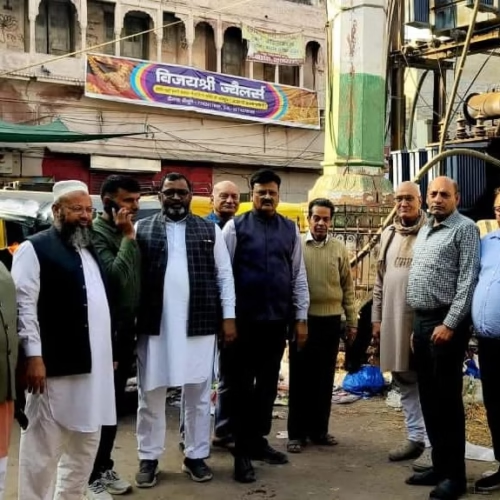
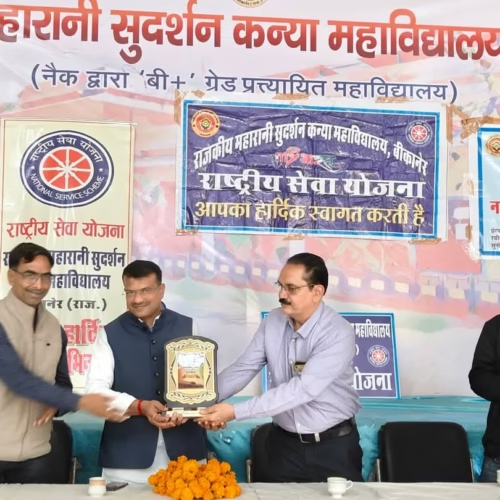

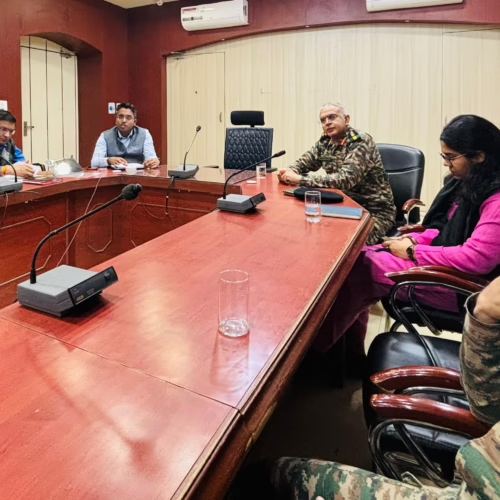
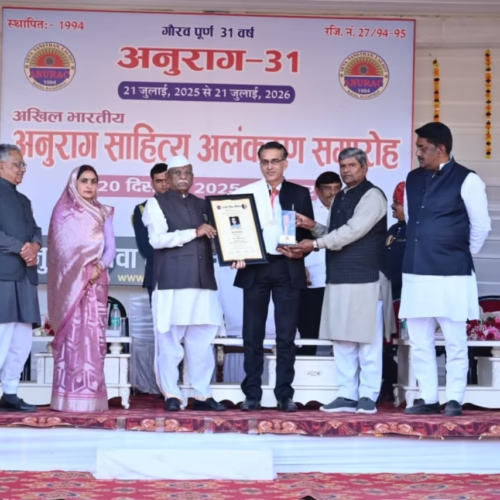
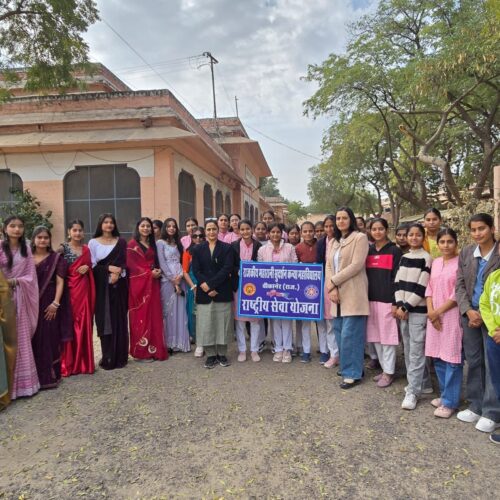


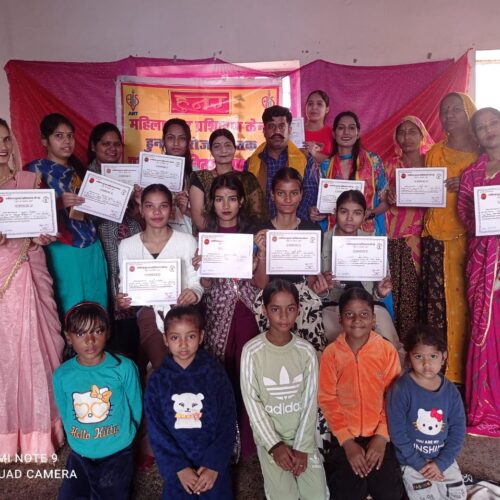
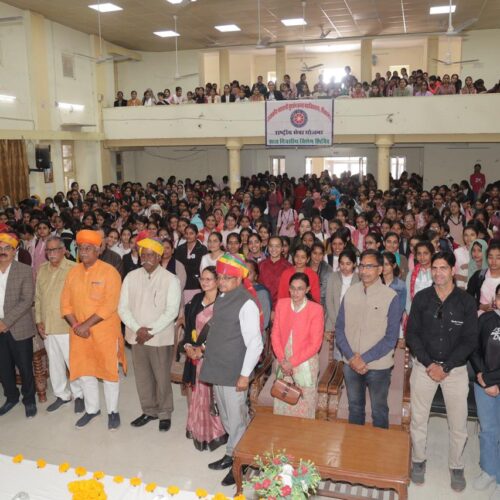
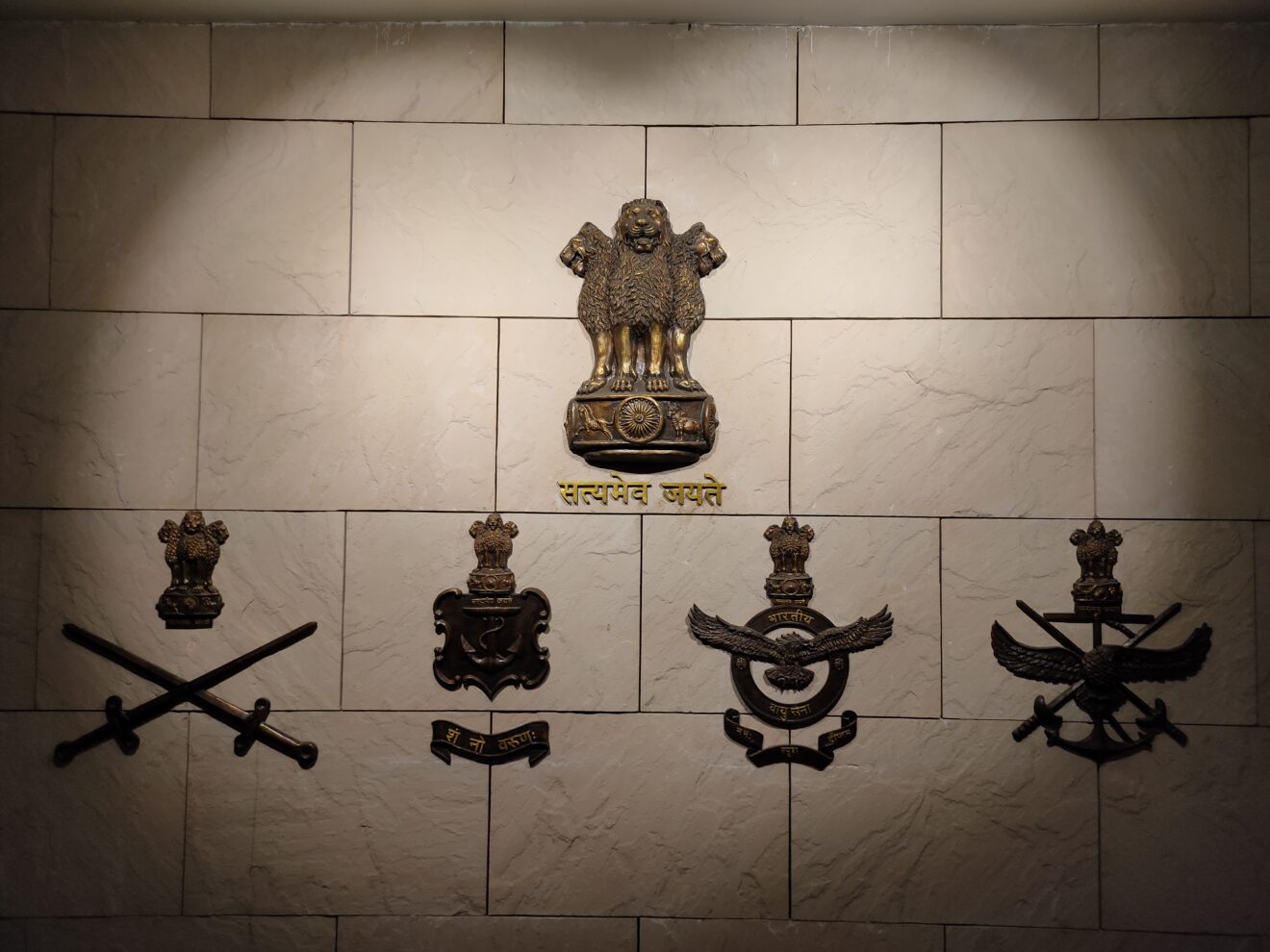





Add Comment